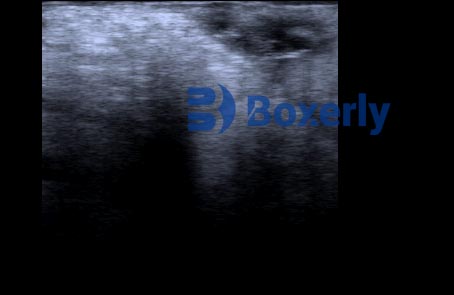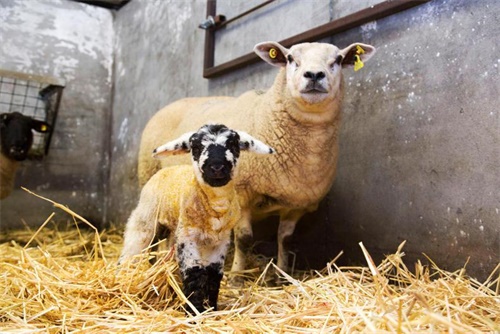Ultrasound’s Role in Precision Management of Beef Cattle Breeds
Across the globe, the beef industry continues to shift toward data-driven practices to optimize efficiency, reduce costs, and improve product quality. Among the most effective tools enabling this transformation is veterinary ultrasound — a non-invasive imaging technique that allows farmers to monitor internal anatomy and reproductive status in real time. While ultrasound is widely used in cattle management, its targeted use in breed-specific strategies can unlock even greater productivity.
Breed-specific beef management involves tailoring care, feeding, breeding, and health decisions based on the unique physiological traits of each cattle breed. From Angus to Hereford, and from Brahman to Charolais, each breed presents distinct advantages and challenges. Ultrasound can bridge the gap between breed potential and performance by offering insights that would otherwise require invasive or delayed methods.
This article explores how ultrasound contributes to more accurate selection, better breeding outcomes, and optimized meat quality in breed-specific beef cattle operations.
I. Reproductive Efficiency: Breed-Based Timing and Monitoring
Reproduction remains a cornerstone of cattle profitability. Ultrasound allows farmers to detect pregnancy early (as soon as 25–30 days post-insemination) and assess ovarian structures. However, timing and interpretation can vary depending on the breed.
Bos indicus breeds, such as Brahman, often exhibit subtler estrus signs and later maturity compared to Bos taurus breeds like Angus or Hereford. Using ultrasound, producers can track follicular development and ovulation timing to optimize breeding synchronization protocols according to breed physiology.
This not only improves conception rates but also enables early identification of reproductive pathologies — such as cysts or uterine infections — before they impact productivity.

II. Carcass Trait Prediction for Genetic Selection
One of the most impactful uses of ultrasound is the evaluation of carcass traits in live animals. This includes measuring backfat thickness, ribeye area, and intramuscular fat (marbling) — indicators that are essential for both quality grading and breeding decisions.
Different breeds have varying capacities for marbling and muscle development. For example, Angus cattle are renowned for superior marbling, while Limousin or Belgian Blue breeds are typically leaner and more muscular. With ultrasound, farmers can scan young animals and make data-backed culling or mating decisions before feed investment becomes substantial.
These insights also support Expected Progeny Differences (EPDs), helping producers select sires and dams that will transmit desirable carcass traits to offspring.
III. Optimizing Nutrition Strategies by Breed
Breed-specific nutrient needs can vary based on growth rates, frame size, and metabolic efficiency. Ultrasound offers a way to monitor body condition score (BCS) and muscle mass development across time, especially when dietary adjustments are being tested.
For instance, Charolais cattle tend to grow rapidly and may require higher energy diets during finishing. In contrast, heritage or smaller-framed breeds may perform better with lower-energy, forage-based rations. By measuring changes in fat thickness and muscle depth via ultrasound, farmers can adjust rations accordingly, reducing feed waste and enhancing growth.

IV. Health Monitoring and Early Intervention
In addition to reproduction and carcass evaluation, ultrasound helps detect internal health issues across breeds. Liver abscesses, gastrointestinal distension, and pneumonia can all be identified through thoracic or abdominal scanning — often before external symptoms appear.
Breed-specific susceptibility to certain diseases can be monitored more proactively with ultrasound. For example, dairy-beef crossbreeds may be more prone to metabolic issues under feedlot conditions and require earlier ultrasound evaluation.
Early detection reduces mortality risk and ensures that treatment decisions are targeted and cost-effective.
V. Sustainability Through Breed Optimization
Precision livestock farming isn’t just about maximizing output — it’s also about reducing resource input per unit of beef produced. Ultrasound empowers producers to select and manage animals that are genetically efficient, reproductively sound, and aligned with their operational goals.
By matching cattle breeds with their environmental strengths — such as heat tolerance in Brahman or cold resistance in Hereford — and using ultrasound to monitor their performance, farmers can increase herd sustainability. This results in lower greenhouse gas emissions, reduced water use, and enhanced animal welfare.
Conclusion
Ultrasound, while a simple technology at its core, offers transformative benefits when applied with breed-specific strategies in beef cattle management. From reproductive efficiency to carcass evaluation, and from nutrition to sustainability, ultrasound supports more informed decisions that translate into improved productivity, profitability, and environmental responsibility.
As technology becomes more portable and affordable, its adoption in breed-focused operations will likely continue to expand — offering producers a competitive edge in the evolving landscape of livestock agriculture.
References
-
Beef Improvement Federation. (2022). “Guidelines for Ultrasound Scanning.” https://beefimprovement.org/wp-content/uploads/2022/02/BIF-Ultrasound-Guidelines-2022.pdf
-
University of Nebraska-Lincoln Extension. (2023). “Ultrasound Technology for Genetic Improvement.” https://beef.unl.edu/ultrasound-technology-genetic-improvement
-
American Angus Association. (2022). “Understanding Carcass Ultrasound Data.” https://www.angus.org/pub/ultrasound.aspx
-
Iowa State University. (2023). “Reproductive Management of Beef Cows.” https://www.extension.iastate.edu/livestock/reproductive-management
-
National Cattlemen’s Beef Association. (2024). “Precision Feeding for Genetic Potential.” https://www.ncba.org/resources/feeding-for-efficiency





Can you be more specific about the content of your article? After reading it, I still have some doubts. Hope you can help me.